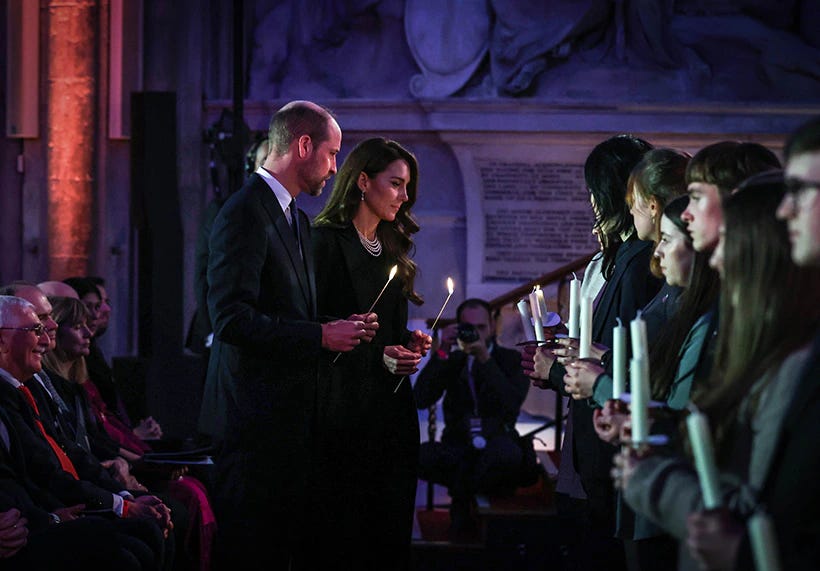The Waleses, Holocaust Remembrance Day, and a Chanel Controversy
also, why visual optics will always matter during royal engagements
On Monday, January 27th, the Prince and Princess of Wales joined survivors of the Holocaust to mark Remembrance Day on the 80th anniversary of the liberation of Auschwitz-Birkenau. Alongside youth representatives from the Holocaust Memorial Day Trust and their partner organizations, the couple lit memorial candles and paid their respects to the lives that were extinguished during the tragedy.
While giving a reading at the event, Prince William paid tribute to his great-grandmother, Princess Alice of Battenberg, who lived in Athens during World War II and “worked tirelessly for the Red Cross, helping to organize soup kitchens, opening shelters for orphaned children, and setting up a nursing system for poor areas of the city.” Beyond that, William revealed, Alice “gave refuge to a Jewish widow, Rachel Cohen, and two of her five children to save them from deportation to the death camps.”
He went on to illuminate how the Greek princess, who lived in her brother-in-law Prince George’s palace at the time, “used her deafness to an advantage” and “pretended not to understand their questions” when questioned by the Gestapo.
As for Catherine, her presence seemed to be a last-minute commitment on the part of Kensington Palace—but a welcome present nonetheless. She was warm, effusive, and openly affectionate towards the Holocaust survivors at the event. She has personal connections with a few of them, including Yvonne Bernstein, whom she photographed for the Imperial War Museum’s 2020 exhibition.
But the reality of royal engagements, sadly, does not always place the focus on a royal’s genuine warmth or connection. To the public, looking from the outside in at this type of event, sometimes the lesser, purely visual signifiers are what end up sticking.







